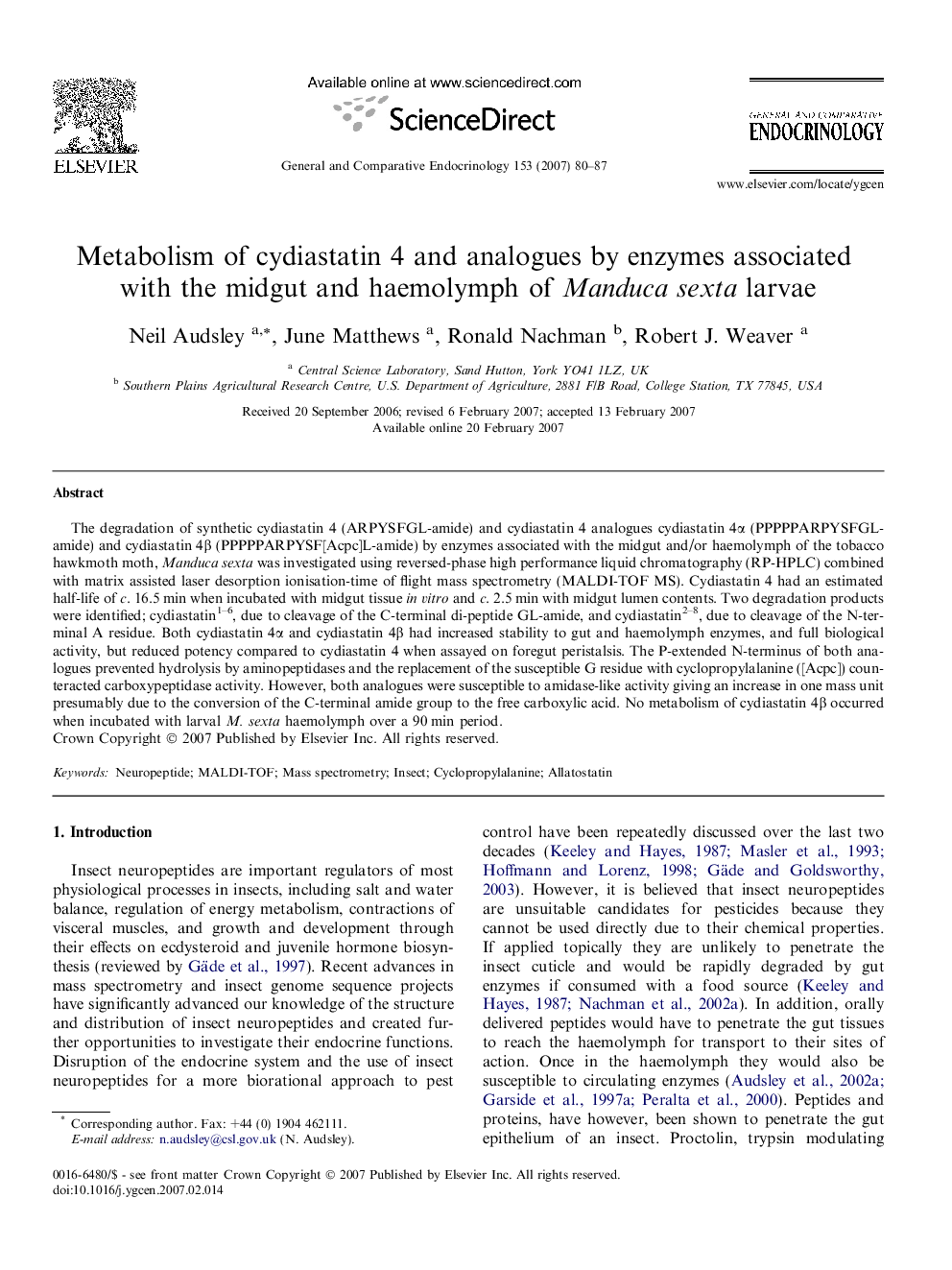| Article ID | Journal | Published Year | Pages | File Type |
|---|---|---|---|---|
| 2801758 | General and Comparative Endocrinology | 2007 | 8 Pages |
Abstract
The degradation of synthetic cydiastatin 4 (ARPYSFGL-amide) and cydiastatin 4 analogues cydiastatin 4α (PPPPPARPYSFGL-amide) and cydiastatin 4β (PPPPPARPYSF[Acpc]L-amide) by enzymes associated with the midgut and/or haemolymph of the tobacco hawkmoth moth, Manduca sexta was investigated using reversed-phase high performance liquid chromatography (RP-HPLC) combined with matrix assisted laser desorption ionisation-time of flight mass spectrometry (MALDI-TOF MS). Cydiastatin 4 had an estimated half-life of c. 16.5 min when incubated with midgut tissue in vitro and c. 2.5 min with midgut lumen contents. Two degradation products were identified; cydiastatin1-6, due to cleavage of the C-terminal di-peptide GL-amide, and cydiastatin2-8, due to cleavage of the N-terminal A residue. Both cydiastatin 4α and cydiastatin 4β had increased stability to gut and haemolymph enzymes, and full biological activity, but reduced potency compared to cydiastatin 4 when assayed on foregut peristalsis. The P-extended N-terminus of both analogues prevented hydrolysis by aminopeptidases and the replacement of the susceptible G residue with cyclopropylalanine ([Acpc]) counteracted carboxypeptidase activity. However, both analogues were susceptible to amidase-like activity giving an increase in one mass unit presumably due to the conversion of the C-terminal amide group to the free carboxylic acid. No metabolism of cydiastatin 4β occurred when incubated with larval M. sexta haemolymph over a 90 min period.
Related Topics
Life Sciences
Biochemistry, Genetics and Molecular Biology
Endocrinology
Authors
Neil Audsley, June Matthews, Ronald Nachman, Robert J. Weaver,
